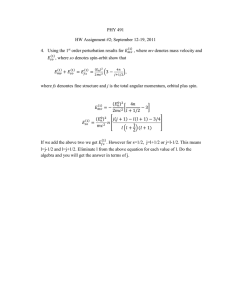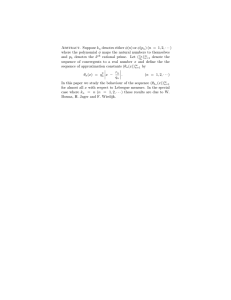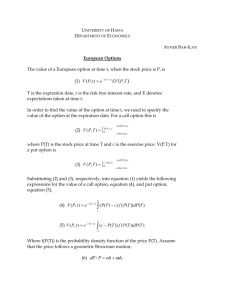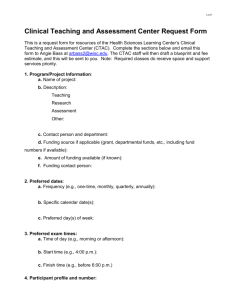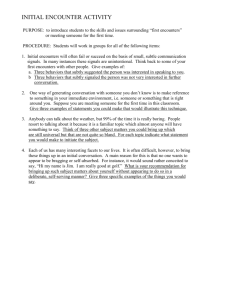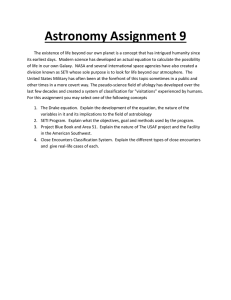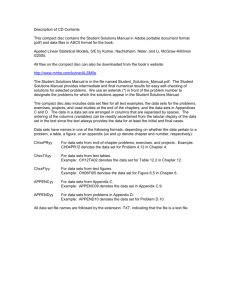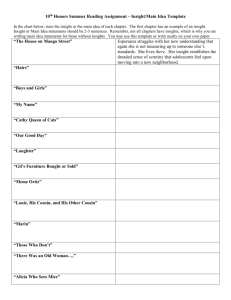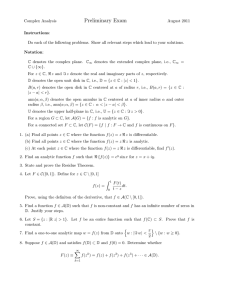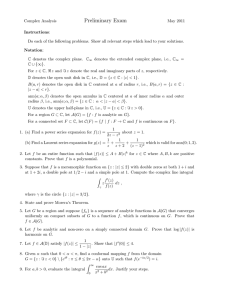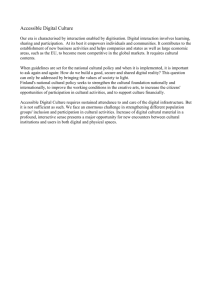CHAPTER 13. CUSTOMER DEFINED SERVICE STANDARDS
advertisement
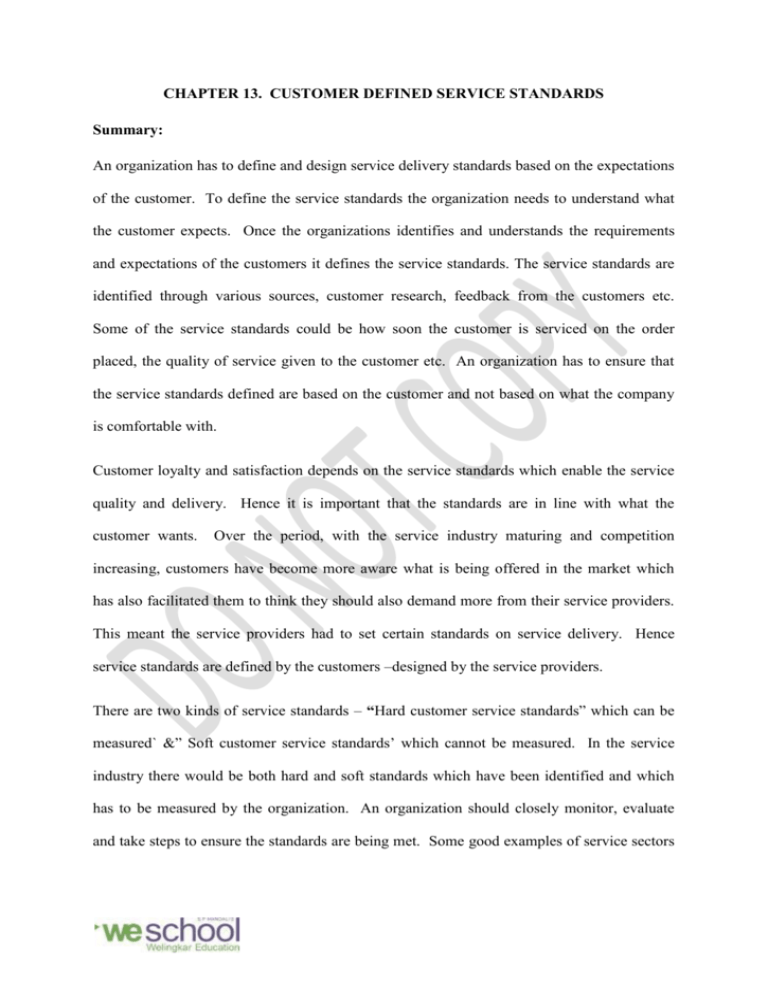
CHAPTER 13. CUSTOMER DEFINED SERVICE STANDARDS Summary: An organization has to define and design service delivery standards based on the expectations of the customer. To define the service standards the organization needs to understand what the customer expects. Once the organizations identifies and understands the requirements and expectations of the customers it defines the service standards. The service standards are identified through various sources, customer research, feedback from the customers etc. Some of the service standards could be how soon the customer is serviced on the order placed, the quality of service given to the customer etc. An organization has to ensure that the service standards defined are based on the customer and not based on what the company is comfortable with. Customer loyalty and satisfaction depends on the service standards which enable the service quality and delivery. Hence it is important that the standards are in line with what the customer wants. Over the period, with the service industry maturing and competition increasing, customers have become more aware what is being offered in the market which has also facilitated them to think they should also demand more from their service providers. This meant the service providers had to set certain standards on service delivery. Hence service standards are defined by the customers –designed by the service providers. There are two kinds of service standards – “Hard customer service standards” which can be measured` &” Soft customer service standards’ which cannot be measured. In the service industry there would be both hard and soft standards which have been identified and which has to be measured by the organization. An organization should closely monitor, evaluate and take steps to ensure the standards are being met. Some good examples of service sectors where both hard and soft service standards are defined and measured are banks, hotels, airlines, healthcare, telecom etc. The most challenging and important task is to define the service standards. Developing customer service standards entail several steps. One of the first steps is to identify the various service encounters or interactions and the source (call centre, company showroom etc.). They are the key drivers which define the service standards of an organization. This is where an organization can know and understand the expectation of service delivery standards of the customer. Hence the organizations then has to identify a service encounter sequence or the various steps or encounters the customer experiences when receiving the service. The second step is identifying customer expectations to specific behaviour and actions. The third step is to decide what service standards the organization would like to implement to measure the service delivery –soft standards, hard standards or both. The organization must design standards to ensure that all service delivery are in the scope (customer expectations from services being offered) at times to evaluate and set the standards, both soft as well as hard aspects have to be incorporated in the standards. The fourth step is to have clear measurements for standards defined. Hard measures are very easy to measure whereas soft measures at times gives a general insight into the performance of the service delivery. Hence organization need to ensure the soft measures have a scale (1-5 where one denotes v poor and 5 denotes excellent) which would facilitate the customers to rate the soft service standards and also easy for the organization to analyze the soft standard performance. The fifth step is ensuring there are targets assigned to each service standards. Targets help an organization to measure and analyze standards performance vis-a-vis the targets. It then facilitates the organization to take appropriate steps to enhance the performance besides working out to identify what went wrong. The sixth step is the measure the standards with data “only”. Every standard when being measured for its performance should have data to justify its performance. The seventh step is giving feedback to employees on their performance in relation to the service standards. A structured feedback on the service delivery performance would help the employees know where they are doing well or where they need to improve. And the eighth step is organization should keep reviewing and updating their performance targets for each service standards. The performance standards are dependent and influenced by the customers whose expectations keep changing and the organization ability to meet those benchmark targets. This chapter has focussed on importance of setting standards and the need for evaluating the standards. Due to the gap in standardization of the service actions and the behaviours displayed by the customer interfacing team, the GAP 2 develops. The chapter also discussed in details the “hard” and the “soft” standards and how they are relevant to an organizations. Both hard and soft standards can be measured in different manners which were discussed. The challenge for an organization is to design and develop customer service standards. Using the organization objective, the organization should design the most appropriate standards and ensure that all services they are offering and that all their customers are covered in a manner. The chapter then gave an insight into the various steps which should be adopted to develop the service standard.

